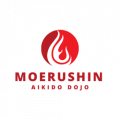There is a lot of bowing in Aikido:
- You bow when you enter or leave the mat.
- The class bows toward the shomen (the front of the dojo) and the sensei (teacher), both at the beginning and end of class.
- We bow toward our training partners before, after, and sometimes during paired practice.
Why all the bowing? I’ll give a couple of answers. One is that Aikido is a Japanese martial art, rooted in Japanese culture, and bowing is an important part of courtesy/politeness/respect. The Japanese word for this is rei, and even though we translate it as “respect” or “courtesy” that doesn’t really capture the full sense of the concept.
In American culture, we often talk about respect as something that is earned (e.g. the sensei deserves respect because of their years of experience) or due because of position (e.g. police are due respect because of their job.) Rei, on the other hand, is not dependent on either position or merit. While it is true that the formalities of bowing in Japan reflect seniority and hierarchy, the fact of rei itself doesn’t depend on either. I think of this as being related to the idea of sonder: the idea that each random person you encounter leads a life just as full and complex as your own.
So, we practice rei to show respect for one another. In the martial arts, this is especially important because, in practicing, I am loaning you my body and mind to use as a training tool–and vice versa. The arms that I use to hug my family members are the same ones that I lend to you for your practice of Aikido. This is also one reason why Aikido dojo often value diversity in terms of size, age, gender, flexibility, strength, and so on. Each person in the dojo is a full, complex, and vibrant person–and we honor that presence through the practice of rei.
The second reason we bow is as a form of ritual practice. I don’t mean ritual in a religious sense. Ritual is a pattern of behavior that focuses our attention. My morning coffee ritual helps to take my mind away from “I’m so tired…” and toward the work of the day. When we bow in at the beginning of class, we are leaving the work day behind and committing to focus on the practice. At the end of the class, we bow out and return to the everyday world–but we hope to carry some of the practice with us off the mat. In the martial arts, we also ritualize elements of the practice in part to protect ourselves and our training partners. We don’t want surprises–it is best in training (especially in the beginning) to know exactly when an attack will begin and end, to check in with each other, to communicate shared readiness.
